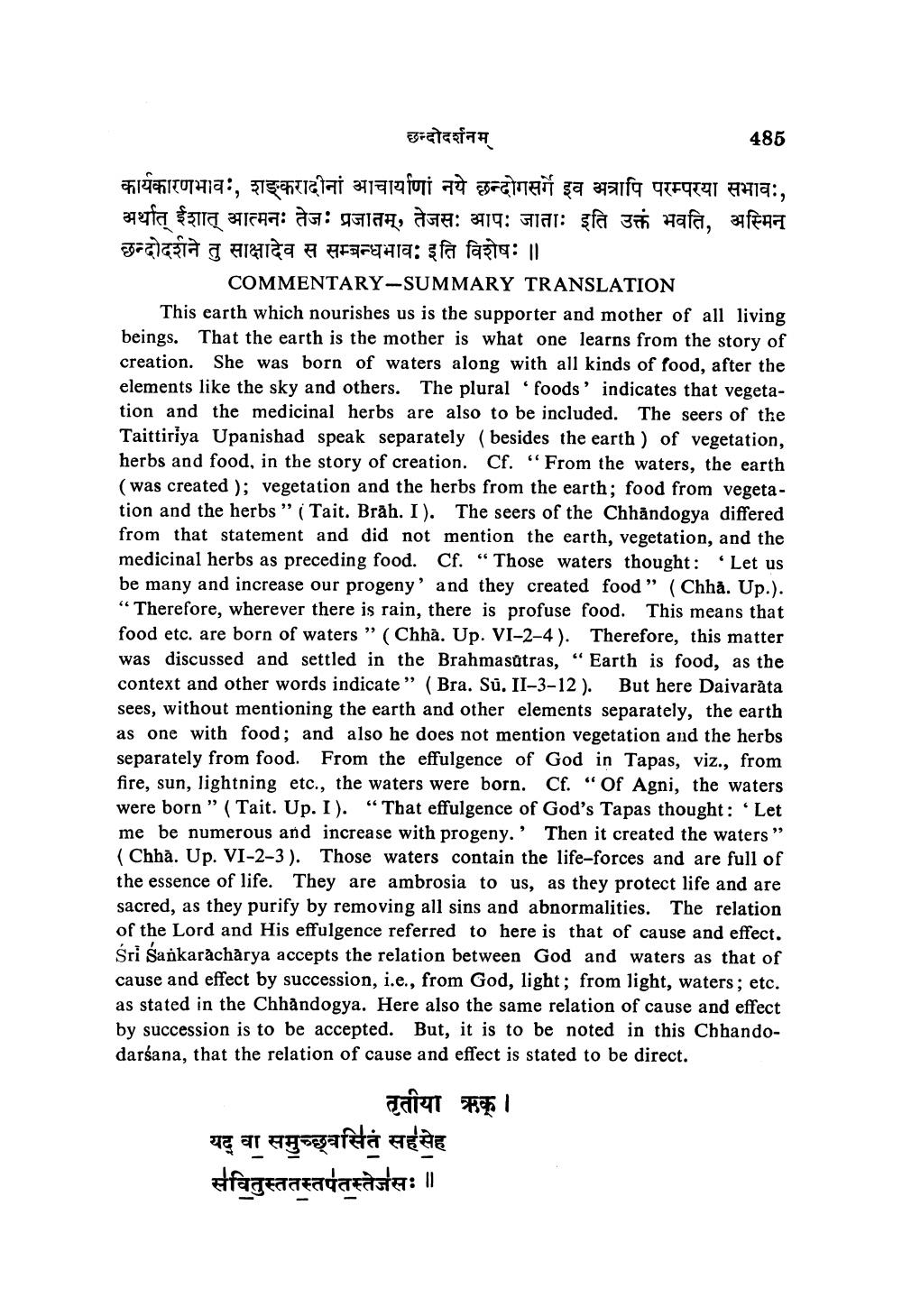________________
छन्दोदर्शनम्
485
कार्यकारणभावः, शङ्करादीनां आचार्याणां नये छन्दोगसर्गे इव अत्रापि परम्परया सभाव:, अर्थात् ईशात् आत्मनः तेजः प्रजातम्, तेजसः आपः जाताः इति उक्तं भवति, अस्मिन् छन्दोदरीने तु साक्षादेव स सम्बन्धभावः इति विशेषः ॥
COMMENTARY-SUMMARY TRANSLATION
This earth which nourishes us is the supporter and mother of all living beings. That the earth is the mother is what one learns from the story of creation. She was born of waters along with all kinds of food, after the elements like the sky and others. The plural foods' indicates that vegetation and the medicinal herbs are also to be included. The seers of the Taittiriya Upanishad speak separately (besides the earth) of vegetation, herbs and food, in the story of creation. Cf. "From the waters, the earth (was created); vegetation and the herbs from the earth; food from vegetation and the herbs" (Tait. Brah. I). The seers of the Chhandogya differed from that statement and did not mention the earth, vegetation, and the medicinal herbs as preceding food. Cf. "Those waters thought: Let us be many and increase our progeny' and they created food" (Chha. Up.). "Therefore, wherever there is rain, there is profuse food. This means that food etc. are born of waters" (Chha. Up. VI-2-4). Therefore, this matter was discussed and settled in the Brahmasutras, "Earth is food, as the context and other words indicate" (Bra. Sü. II-3-12). But here Daivarăta sees, without mentioning the earth and other elements separately, the earth as one with food; and also he does not mention vegetation and the herbs separately from food. From the effulgence of God in Tapas, viz., from fire, sun, lightning etc., the waters were born. Cf. "Of Agni, the waters were born" (Tait. Up. I). "That effulgence of God's Tapas thought: Let me be numerous and increase with progeny." Then it created the waters" (Chha. Up. VI-2-3). Those waters contain the life-forces and are full of the essence of life. They are ambrosia to us, as they protect life and are sacred, as they purify by removing all sins and abnormalities. The relation of the Lord and His effulgence referred to here is that of cause and effect. Sri Sankaracharya accepts the relation between God and waters as that of cause and effect by succession, i.e., from God, light; from light, waters; etc. as stated in the Chhandogya. Here also the same relation of cause and effect by succession is to be accepted. But, it is to be noted in this Chhandodarśana, that the relation of cause and effect is stated to be direct.
तृतीया ऋक् ।
ag ar agsgafdá addC efagtaazadatàsla: ||




